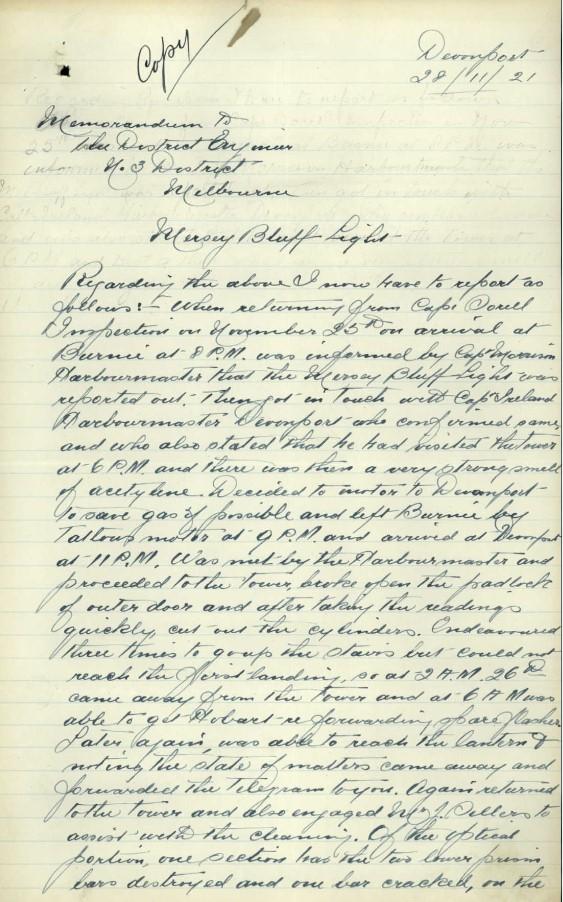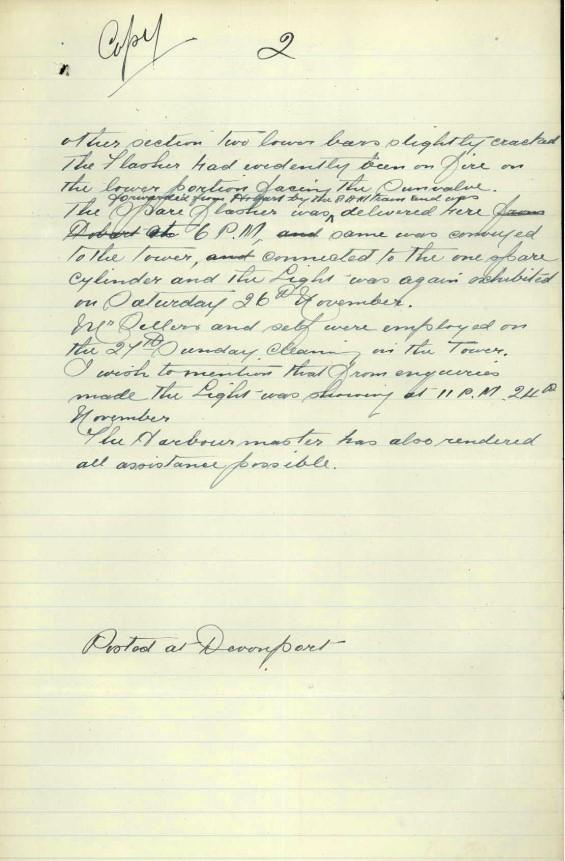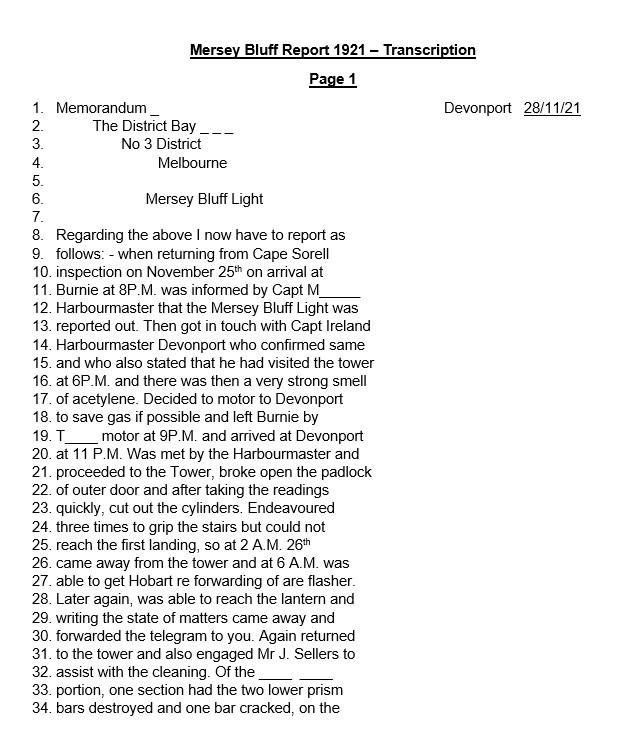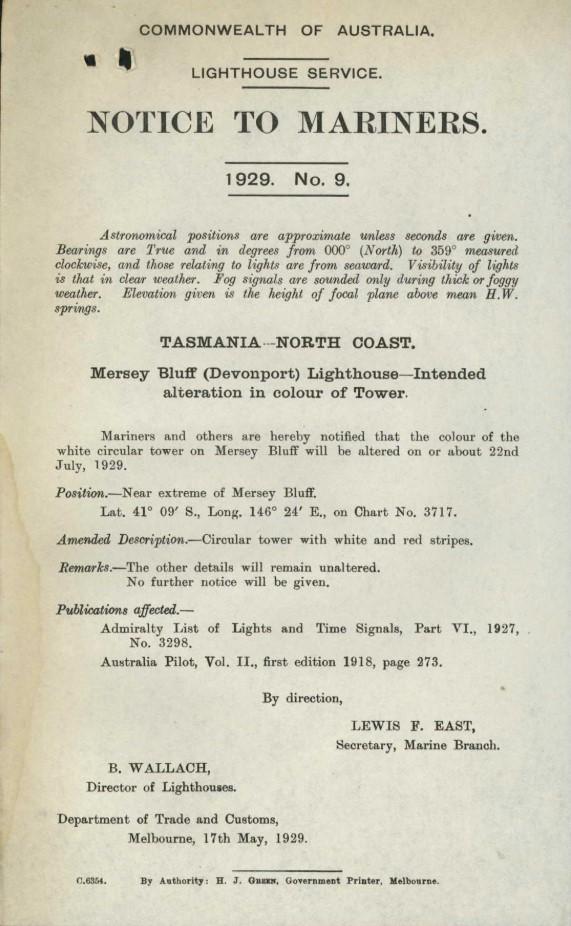Appendix 1. Glossary of heritage conservation terms
The Burra Charter, from its first (1979) version and its current (2013) version, defined a set of terms that have since been widely adopted in Australian heritage conservation practice.
Where the following terms are used in their heritage management plan, the particular meanings defined in the charter are intended. The definitions are quoted from Article 1 of The Burra Charter20.
Adaptation means modifying a place to suit the existing use or a proposed use.
Associations mean the special connections that exist between people and a place.
Compatible use means a use which respects the cultural significance of a place. Such a use involves no, or minimal, impact on cultural significance.
Conservation means all the processes of looking after a place to retain its cultural significance.
Cultural significance means aesthetic, historic, scientific, social or spiritual value for past, present or future generations. Cultural significance is embodied in the place itself, its fabric, setting, use, associations, meanings, records, related places and related objects. Places may have a range of values for different individuals or groups.
Fabric means all the physical material of the place including components, fixtures, contents, and objects.
Interpretation means all the ways of presenting the cultural significance of a place.
Maintenance means the continuous protective care of a place and its setting. Maintenance is to be distinguished from repair which involves restoration or reconstruction.
Meanings denote what a place signifies, indicates, evokes or expresses to.
Place means a geographically defined area. It may include elements, objects, spaces and view. Place may have tangible and intangible dimensions.
Preservation means maintaining a place in its existing state and retarding deterioration.
Reconstruction means returning a place to a known earlier state and is distinguished from restoration by the introduction of new material.
Related object means an object that contributes to the cultural significance of a place but is not at the place.
Related place means a place that contributes to the cultural significance of another place.
Restoration means returning a place to a known earlier state by removing accretions or by reassembling existing elements without the introduction of new material.
Setting means the immediate and extended environment of a place that is part of or contributes to its cultural significance and distinctive character.
Use means the functions of a place, including the activities and traditional and customary practices that may occur at the place or are dependant on the place.
Appendix 2. Glossary of historic lighthouse terms relevant to Mersey Bluff Lighthouse
A
Apron paving – concrete paving surround the base of the lighthouse tower.
Astragal – bars which support the glazing of a lantern. They may also support the roof. Simply a framing member between the glazing bars in the lantern glazing. In its true meaning an astragal is a moulding that has a rounded profile. In lanterns this is almost never the case.
B
Balcony – walk way around the outside of the lantern, used for maintenance and (formerly, when lighthouses were manned) for observing ships. Principal parts are the balcony floor and the balcony balustrade.
Balcony floor – floor of the balcony. Mersey Bluff’s balcony floor is of 1889 sandstone slabs.
Balcony balustrade – handrail together with its supports. The supports are called balusters. A railing or wall on the outer perimeter of a balcony, to prevent people from falling off the balcony. Generally made of metal stanchions and rails, Mersey Bluff is fitted with 1889 wrought iron balustrades.
Balcony door – door in the lantern base to give access to the balcony.
C
Character – pattern of flashes of light emitted by a lighthouse, designed to identify that particular lighthouse.
F
Flagpole – structure whereby signalling flags could be attached for communication with passing vessels.
G
Glazing bar - rebated bars of metal which retain the panes of glass in a window. Often consist of vertical angled steel members joining between done support ring and murette. Often the glazing bar has a tenon that matches a mortise in the murette. Astragals are arranged helically. Helical and trapezoidal glazing bars were used where a fixed light was in use (flashing or non-rotating) as vertical bars cut off portions of the light. In comparison, a helical bar design crosses the light source at an angle, obscuring part of it.
Glazing – middle section of the lantern, circular or polygonal in plan, between the lantern roof above and the lantern base below, made up of glass panes held in a framework of glazing bars and astragals.
I
Incandescent kerosene - a light fuel once utilised by lighthouses to ignite and fuel the lantern.
Intermediate floors – levels found mid-way up a building. Mersey Bluff has two intermediate floors comprised of slate slabs.
Iron – there were two common types of iron used in lighthouse construction; wrought and cast. Older lights will almost certainly contain these iron types. Wrought iron has been worked by hand and is an iron alloy with a very low carbon content in contrast to steel, it also has fibrous inclusions. Cast iron is iron which has been heated until it liquefies, and is then poured into a mould to solidify.
L
Lantern – glazed enclosure, usually of cylindrical or polygonal shape, at the top of a lighthouse, which surrounds and protects the optical apparatus. It contains the optical apparatus, made up of the lantern roof, lantern glazing and lantern base sections.
Lantern floor – level in a lighthouse where the lantern is installed, and by which access may be gained to the optical system and to the inside and outside of the lantern glazing. The lantern floor is generally at or near the same level as the catwalk and can be made from steel, concrete, or timber. Mersey Bluff’s lantern floor is of slate slab.
Lantern glazing – middle section of the lantern, circular or polygonal in plan, between the lantern roof above and the lantern base below, made up of glass panes held in a framework of glazing bars. On the landward side there may be blank panels in place of glass, or other opaque construction. Types of lantern glazing include: flat and curved trapezoidal panes and curved diamond/triangular panes. Mersey Bluff’s lantern glazing are comprised of flat rectangular panes.
Lantern roof – roof of the lantern. Usually made of copper sheeting over a framework of rafters. Mersey Bluff’s lantern roof is a copper-sheeted part-spherical dome.
Lens assembly – a transparent optically refracting element of glass. The surface is usually spherical in form.
Light source – electric bulbs now illuminate most lighthouses.
Lighthouse – the principal structure of a lightstation, generally made up of a lantern, balcony and tower.
Lightstation – A precinct containing a lighthouse structure and other related buildings, for example. Keepers’ cottages, store room, signal house.
O
Optical apparatus - equipment to provide, direct and control the light emitted by the light source. Comprised of light source, lens assembly, and pedestal.
Order – a shorthand expression of the size of an optical apparatus or lantern. At the time the system of orders was established, when kerosene burners were used, longer range lights needed larger burners, and larger burners needed lens assemblies of longer focal length to ensure a sharply defined beam. Thus in turn the lantern rooms were required to be larger to house these lens assemblies. AMSA historic lantern rooms range from 1st to 4th order.
P
Pane - an individual piece of glass in the lantern glazing. Often original supply was 3/8” thick polished plate but in later years this changed to 5/16”.
Pedestal – part of the optical apparatus, consisting of a metal column or base standing on the balcony floor inside the lantern and supporting the lens assembly and light source. Some later Chance documentation (such as their tariffs 1908) also refer to the lantern base as a pedestal.
S
Signal shed – structure whereby signalling flags were stored.
T
Tower – structure to support the lantern at a sufficient height above the ground. The most common types are the masonry tower, timber-framed tower, cast iron tower, and lattice tower.
Appendix 3. Table demonstrating compliance with the EPBC Regulations
Environment Protection and Biodiversity Conservation Regulations 2000 (Cth) Schedule 7A – Management Plans for Commonwealth Heritage Places | |
| Legislation | Satisfied within |
| A management plan must: | |
| (a) Establish objectives for the identification, protection, conservation, presentation and transmission of the Commonwealth Heritage values of the place; and | Section 1 – Introduction |
(b) Provide a management framework that includes reference to any statutory requirements and agency mechanisms for the protection of the Commonwealth heritage values of the place; and | Section 1 – Introduction |
| (c) Provide a comprehensive description of the place, including information about its location, physical features, condition, historical context and current uses; and | Section 2 – Mersey Bluff Lightstation site
Section 3 - History
Section 4 - Fabric
|
| (d) Provide a description of the Commonwealth heritage values and any other heritage values of the place; and | Section 5 – Heritage significance |
| (e) Describe the condition of the Commonwealth heritage values of the place; and | Section 5 – Heritage significance |
| (f) Describe the method used to assess the Commonwealth heritage values of the place; and | Section 5 – Heritage significance |
(g) Describe the current management requirements and goals including proposals for change and any potential pressures on the Commonwealth heritage values of the place; and | Section 6 – Opportunities and constraints |
| (h) Have policies to manage the Commonwealth heritage values of a place, and include in those policies, guidance in relation to the following: | |
| i. The management and conservation processes to be used; | Section 7 – Conservation principles and policies (Policy 1, 2, 3, 5, 6, 10, 11, 14) |
| ii. The access and security arrangements, including access to the area for indigenous people to maintain cultural traditions; | Section 7 – Conservation principles and policies (Policy 3) |
| iii. The stakeholder and community consultation and liaison arrangements; | Section 7 – Conservation principles and policies (Policy 15, 17) |
| iv. The policies and protocols to ensure that indigenous people participate in the management process; | Section 7- Conservation principles and policies (Policy 17) |
| v. The protocols for the management of sensitive information; | Not Applicable |
| vi. The planning and management of works, development, adaptive reuse and property divestment proposals; | Section 7 – Conservation principles and policies (Policy 16) |
| vii. How unforeseen discoveries or disturbances of heritage are to be managed; | Section 7 – Conservation principles and policies (Policy 12) |
| viii. How, and under what circumstances, heritage advice is to be obtained; | Section 7 – Conservation principles and policies (Policy 10, 11) |
| ix. How the condition of Commonwealth heritage values is to be monitored and reported; | Section 7- Conservation principles and policies (Policy 5, 6, 7, 14) |
| x. How records of intervention and maintenance of a heritage places register are kept; | Section 7 – Conservation principles and policies (Policy 7, 13) |
| xi. The research, training and resources needed to improve management; | Section 7 – Conservation principles and policies (Policy 9) |
| xii. How heritage values are to be interpreted and promoted; and | Section 7 – Conservation principles and policies (Policy 4) |
| (i) Include an implementation plan; and | Section 8 – Heritage implementation schedule |
| (j) Show how the implementation of policies will be monitored; and | Section 8 – Heritage implementation schedule |
| (k) Show how the management plan will be reviewed. | Section 7 – Conservation management policies (Policy 18)
Section 8 – Policy implementation schedule |
Appendix 4. Mersey Bluff Lighthouse current light details
Mersey Bluff Light – AN065-01
| IALA AVAILABILITY CATEGORY: | 1 | |
| POSITION: | Latitude: Longitude: Datum: | 41° 09.5269’ S 146° 21.3317’ E WGS84 |
| CHARTS: | AUS 798 | |
| BA LIST OF LIGHTS: | K 3550 | |
| DAYMARK: | White round brick tower with red vertical stripes, surmounted by white lantern, 16 metres high. | |
SECTORS: True bearings from seaward | Red: White: Red: Obscured: | 100° - 114° (014°) 114° - 242° (128°) 242° - 274° (032°) 274° - 100° (186°) |
| COLOUR OF LIGHT: | White: Red | |
| CHARACTER: | Flashing (4) in Flash: Short eclipse: Long eclipse: | 20.0 s 1.0 s 2.0 s 10.0 s |
| LENS: | 700mm f.r. 174° dioptric | |
LIGHT SOURCE:
| Lamp: Lampchanger:
Flasher: Daylight control switch: | 12 V 100W C8 Halogen LP PR30s CR Control S-2086BLR 10amp (6 position) CR Control 9010-3 CR Control Type L |
| LANTERN: | 1889 Chance Bros, cylindrical | |
INTENSITY:
| White: Red: | 16,800 cd 3,400 cd |
| POWER SUPPLY: | Mains supply: Battery charger: Battery capacity (Min): Modules: | 240V AC mains 2 x SR250C 24TY F S L 130 Ah 2 x (24V, 65Ah) |
| REMOTE MONITOR: | Satellite: Communications: Power supply: Parameters: | Orbcomm IDP Common to Light Lantern Current (Day/Night) Battery voltage Mains Failure Charger Failure |
| STRUCTURE: | White round brick tower, 11 metres to base of lantern | |
| ELEVATION: | 37 m | |
| RANGE: | Nominal
Geographical | White: 15 nautical miles Red: 12 nautical miles
19 nautical miles |
Appendix 5. Document detailing 1921 acetylene explosion inside Mersey Bluff Lighthouse & Transcription


Figure 16. Original document detailing acetylene explosion at Mersey Bluff Lighthouse 1921. NAA: P1130, 29/0006 (© Commonwealth of Australia, National Archives of Australia)


Appendix 6. Notice to Mariners. Mersey Bluff Lighthouse – Intended alteration in colour of Tower (1929)

Figure 17. Notice to Mariners regarding 1929 alteration to tower colour. NAA: P1130, 29/0062 (© Commonwealth of Australia, National Archives of Australia) 21
________________________________________________________________________________________________________________________________
Footnotes
![]() 20Australia ICOMOS, The Burra Charter, (2013).
20Australia ICOMOS, The Burra Charter, (2013).
![]() 21NAA: P1130, 29/0062
21NAA: P1130, 29/0062